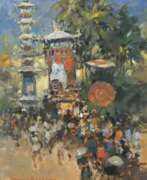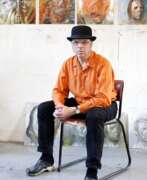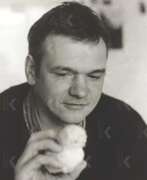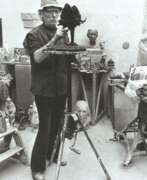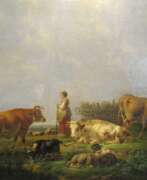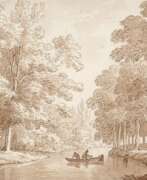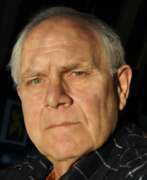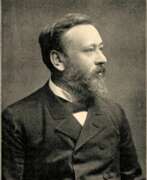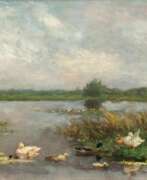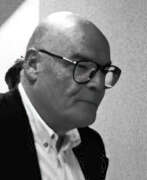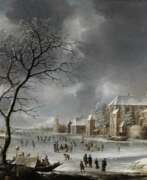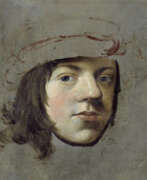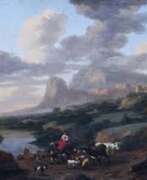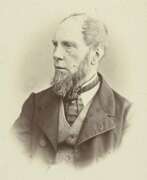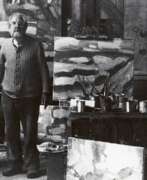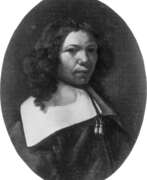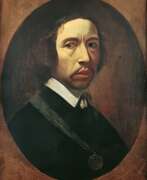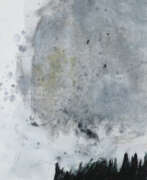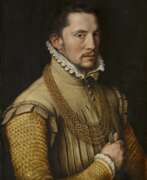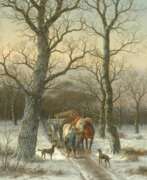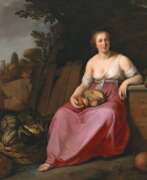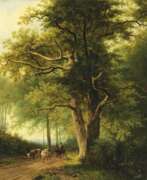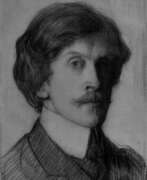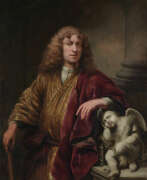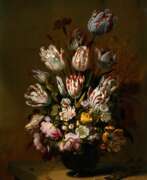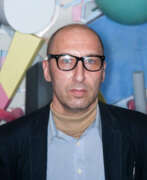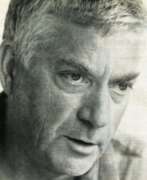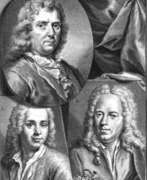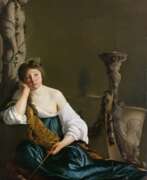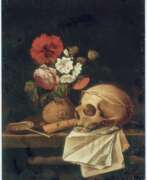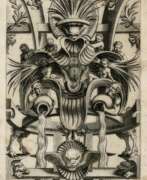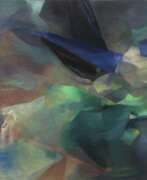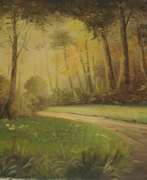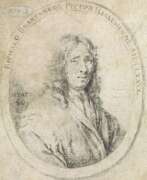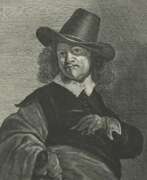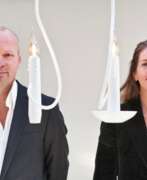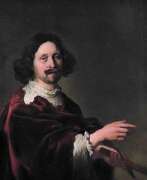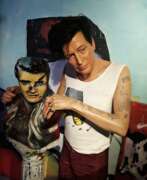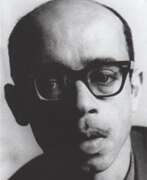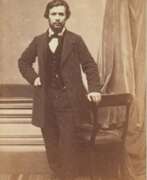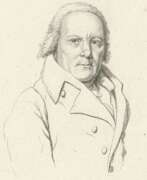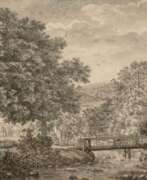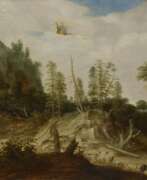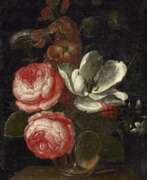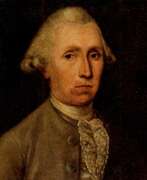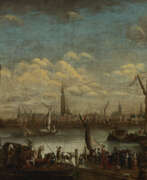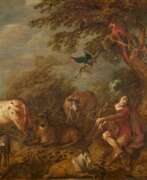Artists The Netherlands
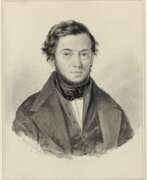

Jacobus Theodorus "Jacob" Abels was a Dutch painter. He was a pupil of the animal painter Jan van Ravenswaay. In 1826 Abels had visited Germany, and on his return settled at the Hague. He was especially noted for his paintings of moonlit landscapes. The Museum at Haarlem has works painted by him.


Anna Adelaïde Abrahams was a Dutch still life painter. Beginning in 1882 Abrahams showed her work in Levende Meesters (Living Masters) exhibitions throughout the Netherlands. She exhibited in Europe in Paris, Berlin, Düsseldorf and Brussels. She exhibited her work at the Palace of Fine Arts at the 1893 World's Columbian Exposition in Chicago, Illinois. Abrahams was a member of the art association Ons Doel Is Schoonheid (Our Goal Is Beauty) and was on the board of the Pulchri Studio.
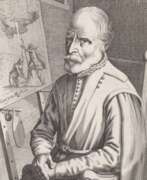

Pieter Aertsen, a Dutch painter born in 1508 in Amsterdam and known as ‘Lange Pier’ for his height, was a significant figure in the Northern Mannerism style. His artistic journey began with religious paintings, but he became renowned in the 1550s for his pioneering work in domestic scenes, where he vividly portrayed everyday objects like furniture, cooking utensils, and food.
Pieter Aertsen is credited with inventing the monumental genre scene, a novel concept in painting that combined still life and genre painting, often incorporating a biblical scene in the background. This style is exemplified in his work "Butcher's Shop" (1551), which is considered the earliest example of Mannerist inversion of still life in Northern painting. In this work, the everyday subject matter of a butcher's stall is given more prominence than the historical or religious scene depicted in the background.
Pieter Aertsen's work reflected the rich mercantile culture of Antwerp, where he lived for many years before returning to Amsterdam in 1556. His paintings often included a wide range of subjects, from market scenes to kitchen tableaux, filled with an abundance of fruits, vegetables, meats, and other food items. His unique approach to painting, which combined the teachings of classical art with the ideas of contemporary artists, made a lasting impact on the genre.
In addition to his genre scenes, Pieter Aertsen continued to create religious works throughout his life, although many were lost during the waves of iconoclasm that swept across northern Europe during the Protestant Reformation. A surviving religious work of his is the "Crucifixion" in the Royal Museum of Fine Arts Antwerp.
Pieter Aertsen's legacy continued through his pupils, including Stradanus and his nephews, Joachim Beuckelaer and Huybrecht Beuckeleer. His influence on the development of still life and genre painting was profound, and his works remain a fascinating study for collectors and experts in art and antiques.
To stay informed about the latest updates, sales, and auction events related to Pieter Aertsen's art, consider signing up for our newsletter. This way, you'll never miss an opportunity to explore and possibly acquire works from this master of genre and still life painting.
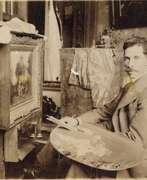

Johannes Evert Hendrik Akkeringa was part of the second generation of the Hague School painters. Akkeringa is primarily known for his paintings and watercolours of women and playing children at the beach, women mending nets and intimate tea-time conversations.
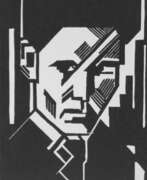

Wobbe Alkema is a Dutch artist, graphic artist, architect, designer and sculptor. He is known for his abstract and geometric works, often combining elements of constructivism and De Stijl.
Alkema was trained as an architect and then turned to art, studying at the Academy of Fine Arts in Groningen. In the 1920s he was involved with the artist collective De Ploeg, which was active in the northern Netherlands and promoted modernist art and culture.
Throughout his career, Alkema continued to explore the principles of abstraction and geometry in his work. His paintings often feature simple geometric shapes such as squares, circles and triangles arranged in complex compositions that suggest movement and depth. He was also interested in the interaction of colour, using bright, bold hues to create dynamic contrasts and harmony.
In addition to painting, Alkema created a number of sculptural works, including abstract reliefs and freestanding sculptures. He also designed furniture and other functional objects, applying his principles of abstraction and geometric form to everyday objects.
Alkema's work is held in the collections of several museums in the Netherlands, including the Groninger Museum and the Amsterdam Stedelijk Museum. He is considered an important figure in the development of abstract art in the Netherlands, and his work continues to be admired for its innovative use of form and colour.
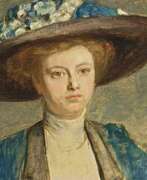

August Allebé was an artist and teacher from the Northern Netherlands. His early paintings were in a romantic style, but in his later work he was an exponent of realism and impressionism. He was a major initiator and promoter of Amsterdam Impressionism, the artist's association St. Lucas, and the movement of the Amsterdamse Joffers. Amsterdam Impressionism – sometimes referred to by art historians as the School of Allebé – was the counterflow to the very strong Hague School in the movement of Dutch Impressionism. As a professor at the Royal Academy of Amsterdam (Rijksakademie van beeldende kunsten) he fostered a cosmopolitan attitude toward art and the promotion and motivation of his students, and provided a significant stimulus to developments in modern art.
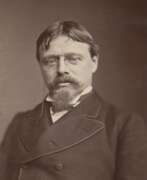

Lawrence Alma-Tadema was a Dutch-British artist renowned for his detailed and romanticized portrayals of ancient civilizations, particularly Rome and Egypt. His meticulous attention to historical accuracy and the lavish representation of marble and luxurious settings distinguished his work. Notably, his fascination with ancient cultures was sparked by his honeymoon visit to Italy and Pompeii, influencing his artistic focus for decades.
Lawrence Alma-Tadema's early work, such as "The Education of the Children of Clovis," showcased his interest in historical subjects and established his reputation. This painting, alongside others like "The Sad Father," demonstrates his commitment to historical detail and narrative depth.
After moving to England due to the Franco-Prussian War and personal reasons, Lawrence Alma-Tadema's career flourished. His works, characterized by their bright palette and refined details, resonated with Victorian audiences, earning him considerable fame and financial success. He was knighted in 1899 and continued to be a pivotal figure in Victorian art, influencing peers and future generations alike.
Lawrence Alma-Tadema's legacy experienced a decline posthumously but saw a resurgence in the 1970s. Today, he is celebrated for his contributions to the Neoclassical and Victorian art movements, with his works featured in prominent collections worldwide, including the Getty Museum and the Tate Gallery.
If you are fascinated by Lawrence Alma-Tadema's artwork and wish to stay updated on sales and auction events related to his works, consider signing up for updates. This will ensure you remain informed about new opportunities to explore and possibly acquire pieces of his illustrious legacy.
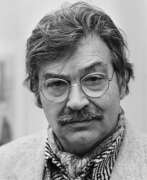

Christiaan Karel Appel was a Dutch painter, sculptor, and poet. He started painting at the age of fourteen and studied at the Rijksakademie in Amsterdam in the 1940s. He was one of the founders of the avant-garde movement CoBrA in 1948. He was also an avid sculptor and has had works featured in MoMA and other museums worldwide.
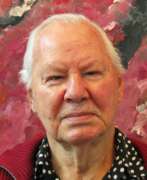

Armando, born Herman Dirk van Dodeweerd, was a Dutch painter, sculptor, poet, writer, violinist, actor, journalist, film, television and theater maker. Armando was his official name; his birth name, the pseudonym as he called it, no longer existed for him. He himself saw his work as «Gesamtkunstwerk», based on his experiences from the Second World War in the vicinity of Kamp Amersfoort.
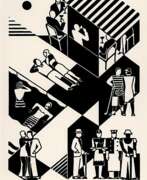

Gerd Arntz was a 20th-century German artist known for his skillful woodcut prints. A member of the Cologne Progressives—a group concerned not just with social and political issues, but also with the public’s ability to understand these concepts—Arntz sought to use his art as a method of delivering crucial information to the masses. Over the course of his life, he designed approximately 4,000 pictograms known as ISOTYPEs, or International System of Typographic Picture Education, a unique form of symbolized data from industries, politics, and economic phenomena intended for use by those who could not read.
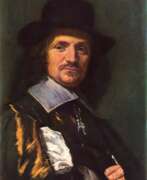

Jan Asselijn, known by his nickname Little Crab (Crabbetje, Krabbetje), was a French and Dutch painter of the Golden Age of Dutch painting.
As a child, Asselijn moved with his family from France to Amsterdam, studied and lived in Italy, where he became a member of the artists' society "Migratory Birds". And he received the nickname Crabbetje because of his physical features - small stature and a damaged arm.
Asselijn painted mainly scenes of horses, cavalry attacks and battles. His works also include genre works, landscapes and animals. Asselijn's most famous painting in this genre is The Frightened Swan, although it is also attributed allegorical meaning.
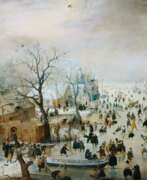

Hendrick Avercamp was a seminal Dutch painter during the Dutch Golden Age. He is celebrated as one of the earliest landscape painters of the 17th-century Dutch school, specializing in vibrant winter scenes of the Netherlands. His paintings are filled with colorful and lively depictions of people engaging in various activities against the backdrop of the Dutch winter landscape.
Educated by the Danish-born portrait painter Pieter Isaacsz, Hendrick Avercamp's work reflects a strong influence from the Flemish painting tradition, especially evident in the landscapes reminiscent of Pieter Bruegel the Elder. His technique of aerial perspective, where objects in the foreground are painted with richer colors than those in the distance, creates a remarkable impression of depth in his paintings.
Hendrick Avercamp's most ambitious and acclaimed work, 'Winter Landscape with Ice Skaters', painted around 1608, is a detailed panorama of human and animal activities during a harsh winter. This painting, along with others like 'Winter Landscape with a Frozen River and Figures' and 'Winter Landscape with Skates and People Playing Golf', showcase his knack for narrative, capturing various facets of 17th-century Dutch society enjoying the winter season.
Despite being mute and probably deaf, Hendrick Avercamp's keen observation skills are evident in his works, where he intricately portrays diverse classes engaging in various winter activities. He produced about a hundred paintings, many of which can be seen in the Rijksmuseum in Amsterdam and the Mauritshuis in The Hague. His work was also celebrated for its historical quality, providing a glimpse into the life of different societal levels in the Netherlands at that time.
For collectors and enthusiasts of art and antiques, Hendrick Avercamp's paintings offer a fascinating window into the Dutch Golden Age, with their vivid portrayal of life and activities in a winter setting. His works, characterized by meticulous detail and a cheerful narrative, remain an integral part of the conversation in the history of Dutch art.
To stay updated on the latest insights and collections related to Hendrick Avercamp's works, consider subscribing to our updates. Stay informed about new sales, exhibitions, and auction events featuring this master of Dutch winter landscapes.


Barent Avercamp was a Dutch painter. He was taught by his uncle Hendrick Avercamp, who was also a painter. Barent primarily painted scenes depicting Netherlands in winter. He was a member of the Guild of Saint Luke, and traveled around the Netherlands including Zwolle and Zutphen for his settings and inspiration.
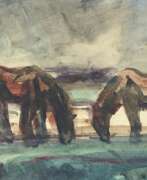

Unica Bachmann-Calcoen (Dutch: Unica Bachmann-Calcoen) was a German-Dutch artist who worked with portraits and depictions of animals, especially horses. She was a pupil of Marie de Jonge (1872-1951) and Martin Monnickendam (1874-1943).
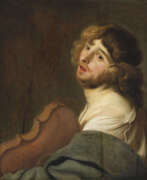

Jacob Adriaensz Backer was a prolific artist of the Dutch Golden Age, known for his dynamic portraits, religious subjects, and mythological scenes. Over a span of twenty years, Backer produced approximately 140 paintings, standing out for his quick execution and attention to detail. His ability to capture intricate details like cuffs, fur, and collars within a short period was renowned, exemplifying the Dutch wet-on-wet painting technique's success during his era.
Influenced by notable figures such as Wybrand de Geest, Peter Paul Rubens, and Abraham Bloemaert, Backer was also celebrated for his drawings of nudes, showcasing his versatile skill set. His works were a testament to the baroque movement, characterized by vivid expression and intricate detail. Notable among his works are portraits that convey the subject's essence with exceptional clarity and depth, earning him a distinguished place among his contemporaries in Amsterdam.
Despite his significant contributions to Dutch art, Backer led a life focused solely on his art, never marrying or purchasing a home, possibly sharing his living quarters with relatives. He was deeply embedded in the artistic milieu of Amsterdam, having been one of the most independent pupils of Rembrandt between 1632 and 1634, absorbing and reflecting the master's style in his works.
For collectors and experts in art and antiques, Jacob Adriaensz Backer's work offers an insight into the Dutch Golden Age's rich cultural and artistic landscape. His legacy continues to be celebrated in major museums and collections worldwide, including the Rijksmuseum in Amsterdam and the National Museum in Warsaw, where his influence on portrait and genre painting remains undisputed.
To stay updated on exhibitions, sales, and auctions related to Jacob Adriaensz Backer, subscribing to newsletters from reputable art galleries and auction houses is advisable. This ensures you receive timely information on opportunities to engage with the works of this masterful Dutch Golden Age painter.
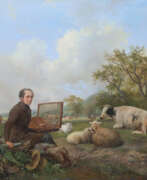

Hendrikus van de Sande Bakhuyzen was a Dutch landscape painter and teacher.
Bakhuyzen studied at The Hague Academy of Art. He is known for his romantic pastoral scenes, especially paintings of livestock, with detailed landscapes.
In 1822 he became a member of the Royal Academy of Arts in Amsterdam and a member of the board of the Academy of Arts in The Hague. He was later elected director of the Hague Academy. Hendrikus Bakhuyzen made a significant contribution to the Romantic period in Dutch art through his work and activities, raising many talented students and followers who founded the artistic movement known as the Hague School.
His children were also very talented: son Julius van de Sande Bakhuyzen (1835-1925) became a renowned landscape painter; daughter Gerardine Jacob van de Sande Bakhuyzen (1826-1895) became a still life painter; son Henrik Gerard van de Sande Bakhuyzen (1838-1923) became a prominent astronomer, member of the Royal Netherlands Academy of Arts and Sciences and director of the Leiden Observatory; son Ernest-Fredrich van de Sande Bakhuyzen was also an astronomer at the Leiden Observatory.
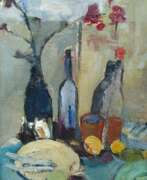

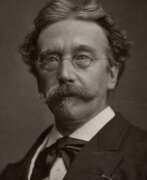

Alexander Hugo Bakker Korff was a 19th-century Dutch genre painter. He was a pupil of the painters Cornelis Kruseman and Huib van Hove. He was trained in the 1840s at the Koninklijke Academie van Beeldende Kunsten in the Hague and the Koninklijke Academie. He became known for his "Bakker Korffjes" – genre pieces of ladies in caps in interiors, that he started painting in 1856 while he was living in Oegstgeest with his sisters as models. In 1870 he was awarded the title ridder in de Leopoldsorde after his works were presented at an exhibition in Brussels in 1869.
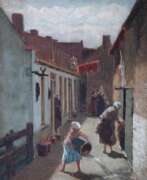

Fridolin Becker was a Dutch painter. Becker studied from 1847 to 1859 at the Koninklijke Academie van Beeldende Kunsten in The Hague, including four years with David Bles. He spent the year 1852 studying in Paris. He was a member of Pulchri Studio. From 1858 to 1860 he worked in Zuilen near Utrecht. He taught at the Hague Art Academy for 33 years.
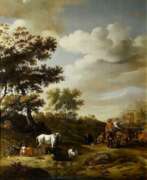

Abraham Janszoon Bega, also Abraham Janszoon Begeyn, was a Dutch landscape painter, still life painter, draftsman and decorator.
Abraham's giftedness was appreciated very early and already at the age of 17 he became a member of the professional Guild of St. Luke of Leiden, studied with Harlem painter Nicholas Berchem (1620-1683), traveled extensively in Europe and painted.
Abraham Bega painted many landscapes, including coastal river views, architectural views, with flocks and shepherds. He also painted floral compositions and still lifes with hunting paraphernalia. In 1688 he was invited to Berlin as court painter to Elector Frederick III, but he worked there mainly as an interior decorator and castle painter.
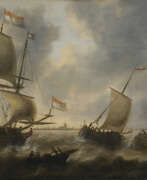

Jacob Adriaensz. Bellevois was a Dutch marine painter.
Bellevois was a follower of Jan Porcellis and Simon de Vlieger and specialized in seascapes. The artist was apparently well acquainted with maritime affairs: his dramatic depictions of various ships in a raging sea and shipwrecks on cliffs are full of characteristic detail.


Ambrosius Benson was an Italian painter who became a part of the Northern Renaissance.
While many surviving paintings have been attributed, there is very little known of him from records, and he tended not to sign his work. He is believed to be responsible for mainly religious art, but also painted portraits on commission. He sometime painted from classical sources, often setting the figures in modern-dress, or a contemporary domestic setting. In his lifetime he was successful; he had a large workshop, his work was sold internationally and he was especially popular in Spain.
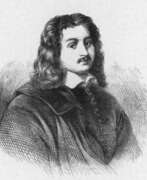

Nicolaes Pieterszoon Berchem was a highly esteemed and prolific Dutch Golden Age painter of pastoral landscapes, populated with mythological or biblical figures, but also of a number of allegories and genre pieces.
He was a member of the second generation of "Dutch Italianate landscape" painters. These were artists who travelled to Italy, or aspired to, in order to soak up the romanticism of the country, bringing home sketchbooks full of drawings of classical ruins and pastoral imagery. His paintings, of which he produced an immense number, (Hofstede de Groot claimed around 850, although many are misattributed), were in great demand, as were his 80 etchings and 500 drawings. His landscapes, painted in the Italian style of idealized rural scenes, with hills, mountains, cliffs and trees in a golden dawn are sought after. Berchem also painted inspired and attractive human and animal figures (staffage) in works of other artists, like Allaert van Everdingen, Jan Hackaert, Gerrit Dou, Meindert Hobbema and Willem Schellinks.
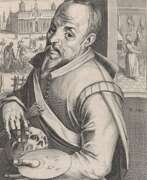

Joachim Beuckelaer, a masterful Flemish painter born around 1533, was renowned for his intricate market and kitchen scenes, which were abundant with detailed depictions of food and household items. His unique approach combined everyday life with religious narratives, often situating biblical episodes within the backdrop of bustling market scenes or domestic settings. This innovative blend of the mundane with the spiritual set the stage for future developments in Dutch and Flemish painting.
Beuckelaer's influence extended beyond his immediate geographic locale, impacting artists across Europe, from Italy to Spain, heralding a new appreciation for kitchen and market scenes that would flourish in seventeenth-century painting. His works were not only appreciated for their aesthetic and technical mastery but also for their ability to capture the essence of sixteenth-century Antwerp life, from the vibrancy of its markets to the intimacy of its kitchens.
His oeuvre includes a variety of subjects, from purely religious works to those that focus solely on still-life elements without any human figures, indicating his versatility and innovation as an artist. Beuckelaer was known for employing techniques that allowed him to efficiently reuse compositions, showcasing his ability to adapt and repurpose his work to meet the demands of his patrons.
Notable works by Beuckelaer, such as the "Four Elements" series, now housed in the National Gallery, London, demonstrate his skill in merging complex allegories with detailed observations from nature and daily life. These paintings are celebrated for their depth of detail and the way they foreground the role of women in the culinary and market spheres.
For collectors and experts in art and antiques, Joachim Beuckelaer's paintings offer a fascinating glimpse into the cultural and social dynamics of the sixteenth century, as well as the evolution of still-life and genre painting in the early modern period. His ability to weave together the secular and sacred, the abundant and the everyday, marks him as a significant figure in the history of art.
To remain informed about the latest discoveries, sales, and auction events related to Joachim Beuckelaer, consider signing up for updates. This subscription is an invaluable resource for those keen to explore the depths of Flemish painting and its enduring influence on European art history.
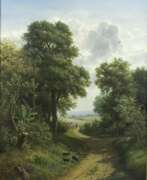

Jan Daniel Beynon was a Dutch-Indonesion landscape, figure and portrait painter. He studied 1848-55 as pupil of C. Kruseman and N. Pieneman at the Amsterdam academy and exhibited in that town repeatedly between 1852 and 1867. In 1855 he returned to the Dutch colony Indonesia; his oeuvre mainly consists of landscapes and persons of that region.
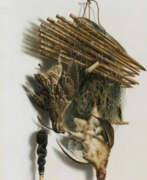

Jacob Biltius or Jacobus Biltius was a Dutch still life painter originally from The Hague who worked in various places including The Hague, Amsterdam, Maastricht, Antwerp, Leeuwarden and Bergen op Zoom. He was known for his game still lifes, kitchen still lifes and trompe-l'œil still lifes.


Valentijn Bing was a Dutch painter, illustrator and lithographer.
Bing painted genre scenes and cityscapes, portraits, as well as paintings on religious themes. He is best known for his sketchbooks depicting the costumes and customs of the Netherlands, which are pictorial descriptions of local dress and events such as carnival, ice skating, cheese making, and weddings. This work was published in 1857 in collaboration with the lithographer Jan Braet von Überfeldt (1807-1894).


Rob Birza is a Dutch painter and sculptor living and working in Amsterdam.
Rob Birza studied at the Academy of Visual Arts Sint-Jost in Breda and at Atelier '63 in Haarlem. He initially painted paintings, gouaches, and watercolors and quickly gained recognition in the Dutch art scene. The artist combined medieval painting techniques with contemporary subjects borrowed from comic books and television series. In his work, he regularly referenced the works of modern masters, contrasting banality and high art. Figural canvases and abstract compositions alternate with colorful still lifes with flowers and large-format paintings depicting scenes of the Afghan war.
Since the 1990s, Rob Birza has also begun to create installations with figures made of styrofoam, papier-mâché and other materials. These figures often contrasted sharply with the paintings. Birza also combined furniture like chairs and lamps in his works.
Rob Birza's work has been widely exhibited in numerous solo and group exhibitions both nationally and internationally and is included in many private and public collections.
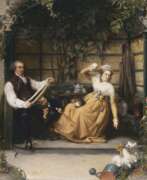

David Bles was a 19th-century painter from the Northern Netherlands. According to the Netherlands Institute for Art History, at the age of thirteen Bles was talented enough to be accepted at the Hague Academy. He attended classes from 1834 to 1837 and from 1838 to 1841. He became a pupil of the painter Cornelis Kruseman and his nephew Jan Adam Kruseman. Bles then travelled to France to study with Joseph-Nicolas Robert-Fleury in Paris. He remained in Paris until 1843 after which he settled in The Hague, though he was a member of the Royal Academy in Amsterdam between 1845 and 1899. He painted scenes from the history of Dutch painting and is best known for portraits and genre paintings.
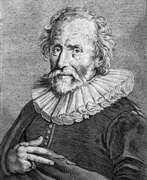

Abraham Bloemaert was a Dutch painter, draughtsman, and printmaker from the Golden Age of Dutch painting, one of the founders of the Guild of St. Luke in Utrecht. Bloemart was a caravagist. He painted mainly landscapes, mythological and biblical scenes, and pastoral works.
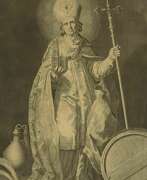

Cornelis Bloemaert the Younger, a Dutch Golden Age painter and engraver, was born in Utrecht. He studied painting with his father and other prominent artists before focusing primarily on printmaking. Bloemaert traveled to Paris and Rome, where he made engravings of renowned Italian paintings. His engravings were known for their rich colors and smooth transitions. He collaborated with Charles de la Haye on the engraving of Pietro da Cortona's frescoes in the Palazzo Pitti. Bloemaert remained in Rome until his death, having achieved great success in his career. He was a member of the Bentvueghels art group.
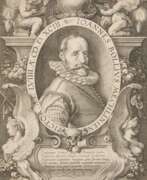

Hans Bol was a Flemish artist renowned for his miniature paintings and prints. Born in Mechelen, Bol was a pivotal figure in the transition from the world landscape tradition to a more realistic portrayal of nature. His early works as a 'water-verwer' offered affordable wall decorations but were susceptible to copying. This led him to create intricate miniatures on parchment, a medium less easily replicated.
Bol's influence on landscape art in the Low Countries is significant. His realistic landscapes, often featuring biblical scenes or daily life, showed a departure from imaginary landscapes, which was common at the time. This shift was partly due to the influence of Pieter Bruegel the Elder. Bol's completion of the Four Seasons series, initially started by Bruegel, established him as a master of landscape art, blending detailed observation with imaginative elements.
Notably, Bol's works are present in prestigious institutions such as the Metropolitan Museum of Art, where pieces like "The Prodigal Son" and various landscapes reflect his mastery of pen, ink, and wash. His artworks, like the "Landscape with a View of Antwerp," stand testament to his skill in capturing the essence of the Dutch landscape, influencing a generation of Dutch painters.
For collectors, auctioneers, and art connoisseurs, Hans Bol's legacy offers a glimpse into the evolution of landscape painting. His works not only adorned the homes of the affluent during his time but continue to be celebrated for their historical and artistic value.
To stay informed about sales and auction events featuring Hans Bol's masterpieces, sign up for updates. By subscribing, you will receive notifications only for new product sales and auction events related to this eminent artist, ensuring you don't miss the opportunity to own a piece of art history.


Henri Cornelis Bol is a Dutch realist painter.
He studied at the Eindhoven Academy of Design and, in addition to painting, had a passion for antiques, the objects of which he used in his works. Bol created realistic still lifes with elements of the trompe-l'œil technique.
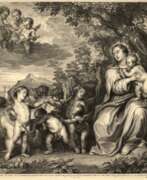

Schelte Adamsz Bolswert was a leading Dutch engraver, noted for his works after Rubens and Van Dyck. Both he and his older brother, Boetius à Bolswert, worked in Amsterdam and Haarlem before settling in Antwerp. For the last five years of his life Boetius worked exclusively on engravings after Rubens. Bolswert's plates were worked entirely with the graver, and he does not seem to have made any use of the drypoint. The freedom which this excellent artist handled the graver, the picturesque roughness of etching, which he could imitate without any other assisting instrument, and the ability he possessed of distinguishing the different masses of colours, have always been admired by the conoisseurs".


Johan Rudolf Bonnet was a Dutch artist who lived much of his life in the town of Ubud on Bali, Indonesia. He was born into a Dutch Huguenot-descended family who had been bakers for many generations. He attended the Rijksakademie van Beeldende Kunsten in Amsterdam.


Johannes Bosboom was a Dutch painter and watercolorist of the Hague School, known especially for his paintings of church interiors. At the age of 14 he became a student of Bartholomeus van Hove and painted in his studio along with Van Hove's son Hubertus van Hove. Together they worked on the pieces of scenery that Van Hove created for the Royal Theatre in The Hague. The young Bosboom traveled to Germany in 1835 to Düsseldorf, Cologne and Koblenz and painted the watercolor View of the Mosel Bridge at Koblenz. In 1839 he traveled to Paris and Rouen and received a silver medal for View of the Paris Quay and the Cathedral at Rouen. He also painted a number of church interiors, a relatively traditional genre. Bosboom had a great deal of success with these pieces, and for the rest of his career he would repeatedly return to this theme, which was the one in which he would achieve his greatest fame. Bosboom's choice of subject matter may seem to isolate him from the rest of the Hague School, but his search for ways to reproduce the spatial atmosphere through light, shadow, and nuances of color places him in the very mainstream of this group. In 1873, during a stay in Scheveningen, he painted many watercolors of town views, the dunes, the beach and the sea.
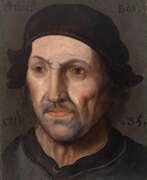

Hieronymus Bosch, a Netherlandish painter born around 1450 in 's-Hertogenbosch, remains one of the art world's most enigmatic figures. Bosch's work is renowned for its intricate, symbolic, and often unsettling imagery, depicting fantastical creatures, earthly pleasures, and human folly with a depth that continues to fascinate scholars and art lovers alike. Despite the scarcity of biographical details—owing to the lack of personal letters or diaries—Bosch's legacy as a pivotal figure in the transition from the medieval to the modern worldview is undisputed.
Bosch spent virtually his entire life in his birthplace, where his family had deep roots in the artistic community. His grandfather and father were both painters, suggesting that Bosch likely received his initial training within his family. By the late 15th century, Bosch had become a respected member of the local Brotherhood of Our Lady, contributing significantly to the cultural and religious life of his community through his artworks. Notably, Bosch's oeuvre includes around thirty paintings, with "The Garden of Earthly Delights," a triptych full of intricate, allegorical imagery, standing out as one of his masterpieces. This work, alongside others such as "The Temptation of St. Anthony" and "The Haywain Triptych," showcases Bosch's unique ability to blend religious themes with his vivid imagination, offering commentary on human sin and redemption.
Bosch's art, characterized by its detailed landscapes populated with a myriad of creatures both heavenly and demonic, reflects a deep moral concern with the fate of humanity, yet leaves much to interpretation. His works are preserved in some of the world's most prestigious museums, including the Museo del Prado in Madrid, where "The Garden of Earthly Delights" is housed, underscoring his lasting impact on the cultural and artistic heritage of the Renaissance period.
Despite the challenges in attributing some works definitively to Bosch due to the absence of signatures on many of his paintings, about 25 paintings and eight drawings are confidently ascribed to him, with others attributed to his workshop. Bosch's influence extended beyond his lifetime, notably inspiring Pieter Bruegel the Elder, and continues to captivate contemporary audiences with his complex iconography and detailed panoramic scenes.
For collectors and experts in art and antiques, Bosch's work represents a fascinating intersection of culture, art, and the human condition, offering endless avenues for exploration and appreciation. To stay updated on new discoveries, sales, and auction events related to Hieronymus Bosch, signing up for updates can provide exclusive insights and opportunities to deepen one's understanding and collection of this remarkable artist's work.
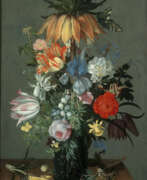

Johannes Bosschaert was a Dutch painter of the Golden Age, a member of the Bosshaert family of floral artists. He was a member of the Guild of St. Luke in Haarlem and Dordrecht. His favorite subject is vases with lush bouquets of flowers.


Ambrosius Bosschaert the Elder, born on January 18, 1573, in Antwerp and passing away in 1621 in The Hague, was a pivotal figure in the Dutch Golden Age of painting. Recognized for his remarkable contributions to the art of still life painting, particularly floral arrangements, Bosschaert founded a dynasty of painters who furthered his intricate style of floral and fruit painting. This legacy cemented Middelburg's status as a premier center for flower painting in the Dutch Republic.
Fleeing to the Northern Netherlands due to religious persecution, Bosschaert and his family settled in Middelburg around 1587, where he would spend the majority of his career. His paintings, known for their precision and vibrant composition, reflect the era's fascination with botany, merging scientific accuracy with artistic beauty. Bosschaert's work was not only celebrated for its aesthetic appeal but also for its symbolic and sometimes religious meanings, often painted on small copper canvases that highlighted the meticulous detail of each flower.
His influence and techniques were continued by his three sons and his brother-in-law, Balthasar van der Ast, ensuring the Bosschaert style flourished through the mid-17th century. Bosschaert's approach to flower painting laid the groundwork for what would become a defining genre in Dutch art, showcasing not just the beauty of nature but the wealth and intellectual curiosity of the era.
For collectors and experts in art and antiques, Ambrosius Bosschaert the Elder's contributions to still life and flower painting remain invaluable. His legacy is preserved in the meticulous bouquets that capture the transient beauty of flora, making his works sought after for both their historical significance and timeless appeal.
To stay informed about new discoveries, sales, and auction events related to Ambrosius Bosschaert the Elder, signing up for updates from art galleries and auction houses is recommended. This ensures access to the latest information and opportunities to acquire works by this master of still life painting.
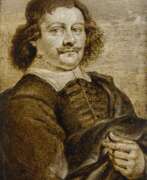

Jan Dirksz Both was a distinguished Dutch painter, draughtsman, and etcher renowned for his pivotal role in the evolution of Dutch Italianate landscape painting. His journey into the arts began in Utrecht, learning from his father before becoming a pupil of Abraham Bloemaert. Both's career took a significant turn when he, alongside his brother Andries, ventured to Rome, absorbing the influence of Claude Lorrain and contributing to projects such as the Buen Retiro Palace in Madrid.
By the mid-1640s, Jan had returned to Utrecht, further honing his craft to produce expansive landscapes illuminated by a Mediterranean glow, notable for their mixture of realism in the foreground against idyllic backgrounds. Noteworthy pieces include "Landscape with Bandits Leading Prisoners" and "Judgement of Paris," showcasing his mastery in blending naturalistic details with mythological and religious figures. His landscapes, characterized by their golden light and imaginative vistas, earned him a place among the leading masters of the Italianate trend in Dutch landscape painting.
Jan Both's legacy is preserved in prestigious collections worldwide, including the Fitzwilliam Museum, the Hermitage, the Kunsthistorisches Museum, the Louvre, and the National Gallery, among others. His work reflects a significant Italian influence merged with his native Dutch sensibilities, marking him as a key figure in the 17th-century art scene.
For collectors and experts in art and antiques, Jan Dirksz Both's oeuvre offers a fascinating glimpse into the blend of Dutch and Italian influences that characterize the Italianate landscape painting tradition. His contributions not only enriched Dutch art but also provided a bridge between the Renaissance and Baroque periods, capturing the beauty of landscapes with a unique, poetic light.
To explore more about Jan Dirksz Both's contributions to art and to stay informed about exhibitions or sales featuring his work, signing up for updates from art institutions can offer exclusive insights into the world of this influential Dutch painter. This subscription ensures enthusiasts and collectors are well-informed about developments related to Both's oeuvre, enhancing their appreciation and understanding of his artistic legacy.
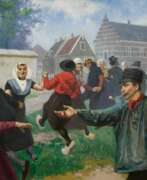

Johan Coenraad Braakensiek was a Dutch painter, illustrator and political cartoonist. For most of his career, Braakensiek worked for a number of publishers as an illustrator. However, he also found work as a political cartoonist for the magazines Geïllustreerd Politie-Nieuws, De Amsterdammer and De Groene Amsterdammer. His first work was with Geïllustreerd Politie-Nieuws where he contributed infrequently. His break and rise in popularity came in 1886 when he was made the political cartoonist for De Amsterdammer magazine. He also was affiliated with De Groene Amsterdammer magazine from 1925 to 1931. Braakensiek remains popular thanks to the books he worked on as illustrator. Books such as Van Allerlei Slag and Uit het leven van Dik Trom, which feature his art are widely known and read.
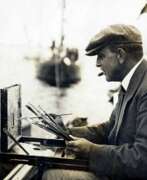

Carl August Breitenstein was a Dutch landscape painter and graphic artist. Breitenstein was a nephew of the German painter Alfred Breitenstein. Breitenstein studied from 1884 to 1889 at the Rijksakademie van beeldende Kunsten in Amsterdam. He engaged in plein air painting in the style of the Hague School, influenced by Impressionism. He mainly painted landscapes, but also city and harbor views, dune landscapes and floral still lifes. Breitenstein was a member of Kunstenaarsvereniging Sint Lucas and Arti et Amicitiae.
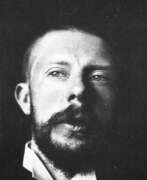

George Hendrik Breitner was a Dutch painter and photographer. An important figure in Amsterdam Impressionism, he is noted especially for his paintings of street scenes and harbours in a realistic style. He painted en plein air, and became interested in photography as a means of documenting street life and atmospheric effects — rainy weather in particular — as reference materials for his paintings.
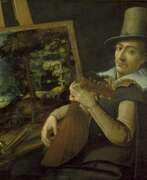

Paul Bril was a prominent Flemish painter, best known for his significant contributions to landscape painting. Born around 1554 in Antwerp, he later moved to Rome, where he became a central figure in the art scene, influencing the Italian and Northern European landscape painting traditions.
Paul Bril's early works were steeped in the Flemish manner, exhibiting a picturesque arrangement of landscape elements with dramatic contrasts of light and dark. His style evolved during his stay in Rome, influenced by the work of Annibale Carracci and Adam Elsheimer. By around 1605, Bril's compositions became more serene and classical, showcasing calmer transitions from foreground to background and embracing pastoral and mythological themes.
Paul Bril's contributions extended beyond his paintings. He was a respected figure in Rome's art community, becoming the first foreign director of the Accademia di San Luca in 1621. His patrons included some of the most influential families in Rome, and his work was sought after by collectors and fellow artists. Bril's influence was profound, impacting future generations of artists, including the Dutch Italianates and genre painters active in Rome.
His works can be found in prestigious galleries worldwide, illustrating his enduring legacy in the art world. For collectors and art and antiques experts, Paul Bril's work represents a significant period in the evolution of landscape painting, blending Flemish traditions with Italian classicism.
For those interested in exploring the captivating landscapes and historical significance of Paul Bril's art, staying informed about new product sales and auction events is essential. Signing up for updates can provide valuable insights and opportunities to acquire pieces associated with this influential artist.
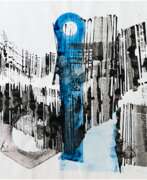

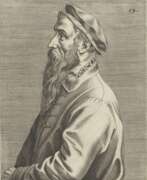

Pieter Bruegel (also Brueghel or Breughel) the Elder (Dutch: Pieter Bruegel de Oude) was the most significant artist of Dutch and Flemish Renaissance painting, a painter and printmaker, known for his landscapes and peasant scenes (so-called genre painting); he was a pioneer in making both types of subject the focus in large paintings.
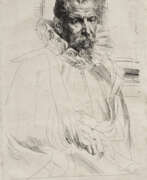

Pieter Brueghel the Younger was a Flemish artist celebrated for his detailed landscapes, religious themes, proverbs, and vibrant village scenes. Despite being the son of the illustrious Pieter Bruegel the Elder, Brueghel the Younger carved out his own niche in the art world, earning the moniker 'Hell Brueghel' for his dynamic scenes of fires and energetic copies of his father's peasant life portrayals.
Brueghel the Younger's original creations, such as "The Village Lawyer," showcase his keen observation of village life, merging the energy and boldness of 17th-century style with his father's idiom. His work is characterized by its lively, picturesque depiction of peasants, albeit some critics argue they lack the subtlety and humanism of his father's creations. Despite this, Brueghel the Younger's legacy includes a significant number of original works and copies that were rediscovered in the 20th century, highlighting his contribution to the Flemish painting tradition.
His workshop was known for its prolific output, especially in producing copies of Bruegel the Elder's compositions, a testament to the enduring popularity and influence of the Bruegel family's artistic legacy. However, Brueghel the Younger also impressed with his unique compositions, contributing to the genre of still life and village scenes with a distinct style that resonated well into modern times.
For collectors and experts in art and antiques, Pieter Brueghel the Younger's works represent an important period in Flemish art, offering insights into the evolution of genre painting and the detailed portrayal of rural life. His paintings, held in esteemed collections worldwide, continue to be studied and admired for their vibrancy, narrative quality, and historical value.
To explore more about Pieter Brueghel the Younger and to stay updated on sales and auction events related to his work, signing up for specialized updates can offer exclusive insights into the world of this influential Flemish painter. This subscription ensures enthusiasts and collectors are well-informed about developments related to Brueghel the Younger's oeuvre, enhancing their appreciation and understanding of his artistic legacy.
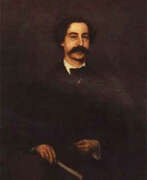

Jacques François Joseph Carabain was a Dutch-Belgian painter, known primarily for his scenes of cities and buildings in the Romantic-Realist style. He was especially interested in Medieval and Baroque structures, and was often attracted to busy market places.
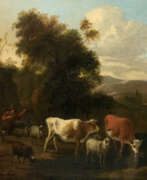

Michiel Carree of Karé was a Dutch painter and decorator of the Golden Age.
Carree was a famous landscape painter: King Frederick of Prussia invited him to Berlin and appointed him court painter. After the king's death, he returned to Holland and was mainly engaged in decorating the palaces of the noble townspeople. Carrée often depicted livestock in his landscapes, and these paintings can now be seen in the Rotterdam Museum.


Jacob Cats was a Dutch painter, printmaker and graphic artist.
He was famous for his urban landscapes and landscapes with realistic portrayals of people and animals. His works were distinguished for their originality, poetic rendering of the features of nature and depth.
His works are represented in almost all major public collections in the Netherlands.
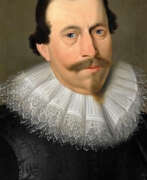

Pieter Claesz was a Dutch Golden Age painter of still lifes.
He and Willem Claeszoon Heda, who also worked in Haarlem, were the most important exponents of the "ontbijt" or dinner piece. They painted with subdued, virtually monochromatic palettes, the subtle handling of light and texture being the prime means of expression. Claesz generally chose objects of a more hospitable kind than Heda, although his later work became more colourful and decorative. Claesz's still lifes often suggest allegorical purpose, with skulls serving as reminders of human mortality. The two men founded a distinguished tradition of still life painting in Haarlem. Pieter Claesz was influenced by the artist movement 'Vanitas'.
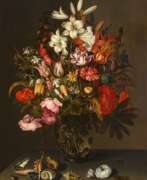

Anthony Claesz the Younger was a Dutch painter who worked on floral still lifes during the Golden Age of Dutch painting.
Anthony Claesz's paintings are generally constructed with great attention to detail, and he was particularly adept at depicting the play of light and shadow on reflective surfaces.
During his lifetime, Anthony Claesz the Younger was highly respected and was a member of the St. Luke's Guild in Amsterdam. His work can be found in many museums and galleries around the world, including the Rijksmuseum in Amsterdam, the National Gallery in London and the Metropolitan Museum of Art in New York.
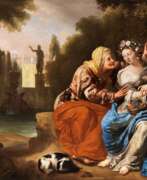

Hermannus Collenius was a Dutch Baroque painter.
The portraits of Hermannus Collenius were characterised by classical elegance and an emphasis on the facial features and clothing of the portrayed subject. The painter often portrayed his sitters according to the latest fashions, which contributed to the popularity of his portraits among the fashionable elite.
